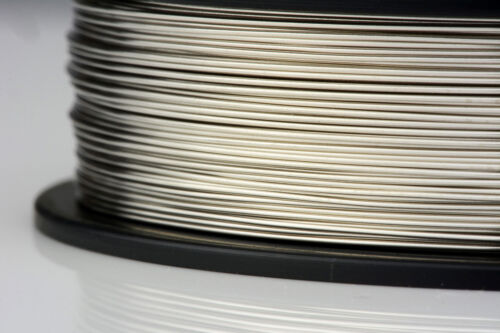Introduction to Nickel Wire
Nickel wire is a type of electrical wire made of pure nickel metal. Nickel is a transition metal that has excellent properties for use as an electrical conductor. Nickel wire has high ductility and tensile strength, with good corrosion resistance in a variety of environments. These properties make nickel wire suitable for applications where other wiring metals struggle.
Physical and Chemical Properties
Nickel has a high melting point of 1453°C and is quite corrosion resistant due to the formation of a stable, adherent protective oxide layer on its surface when exposed to air. This passive oxide film effectively prevents further corrosion, giving nickel good resistance to oxidation and corrosion from alkalis, diluted acids, and sea water. Nickel is also non-magnetic in its pure form and has a silvery-white color. It has a density of about 8.9 g/cm3. Chemically, nickel behaves as a typical transition metal and usually forms divalent cations in compounds containing oxygen or sulfur.
Manufacturing Process
there are a few different methods used to manufacture nickel wire on an industrial scale. One common process starts with nickel electrolysis where nickel is deposited as a thin foil from a nickel solution. This foil is then cold-rolled into thin strips or wires. Another process involves vacuum melting high-purity nickel followed by hot or cold extrusion through a die to produce long nickel rods. These rods are pulled or drawn through progressively smaller dies to reduce the diameter and produce wire. The wires can then undergo further processing like cleaning, annealing or surface treatment depending on the end application requirements. Proper quality control checks ensure that final nickel wires meet specifications.
Applications
Due to its unique properties, pure nickel wire finds a variety of specialized applications:
– Thermocouples: Nickel–chromium and nickel–aluminum thermocouples use nickel wire due to its resistance to high temperatures and corrosion. Thermocouples are used to measure temperatures between -200°C and 1400°C.
– Catalytic reactors: Finely woven nickel wire meshes or gauzes serve as catalyst supports in chemical processing plants and oil refineries. The corrosion resistance is important here.
– Electrical contacts: Due to low resistance and resistance to wear/stress, nickel is used for making contacts in circuit breakers, switches, sensors etc.
– Alloys: Nickel is a key ingredient in many high-strength alloys like Inconel and Hastelloy used for jet engines, turbines and other alloy applications at high temperatures or in corrosive environments.
– Coins: Nickel plating of steel gives a distinctive color to coins like American nickels and euros. Pure nickel is too expensive for bulk coinage.
– Medical: Pure nickel is used for implants, prostheses and other medical applications where biocompatibility is important.
Grades of Nickel Wire
Different wire grades are produced based on the exact nickel composition and manufacturing process:
– Pure or commercially pure nickel contains at least 99% nickel by weight. It has excellent corrosion resistance.
– Nickel 200 contains at least 99% nickel by weight along with some cobalt added for increased strength at moderately high temperatures.
– Nickel 201 or Nickel 201 LC (low carbon) contains trace carbon levels less than 0.01% for reduced susceptibility to intergranular corrosion compared to Nickel 200.
– Nickel 201 HM (high mobility) has sulfur added for improved workability and machinability compared to standard 201 alloys.
– Other special grades like “Incoloy” contain additional chromium or molybdenum for even better corrosion resistance. Properties are tailored as per the application.
Quality Considerations
For critical applications, certain quality parameters are closely controlled in nickel wire manufacturing:
– Carbon, sulfur and phosphorus levels which can adversely affect corrosion resistance.
– Freedom from surface imperfections, cracks or inclusions that act as stress concentrators.
– Homogenous composition and mechanical properties over the wire length/coil.
– Consistent diameter/cross-section within specified tolerances.
– Meeting the chemical composition requirements of the specified grade.
– Verification of mechanical properties like 0.2% proof stress and ductility.
Strict adherence to quality practices is needed since even small defects can undermine performance over long service life. Manufacturer accreditations like ISO 9000 certification provide assurance of quality and process consistency.
Conclusion
Owing to its combination of good electrical conductivity, corrosion resistance, strength and workability pure nickel wire and nickel alloys continue to be important materials for electrical, alloy and chemical applications worldwide. New applications are also emerging with advancements in material science and manufacturing technology. When high purity, consistent quality and specialized properties are needed nickel wire delivers as a specialized and resilient conductor well beyond traditional copper wire limitations.
“*Note:
1. Source: Coherent Market Insights, Public sources, Desk research
2. We have leveraged AI tools to mine information and compile it”



